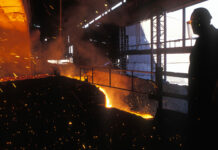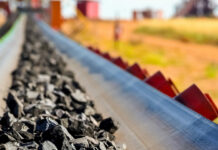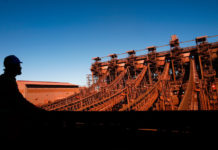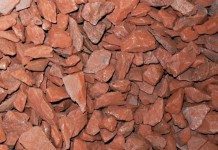
[miningmx.com] — AN assessment of South Africa’s iron and steel sector commissioned by Kumba Iron Ore (Kumba) paints an attractive future for iron ore exports – but not for the country’s steel industry.
The assessment casts a question mark over the viability of any new steel mill proposed for South Africa, such as the R21bn plant being looked at by Afripalm Resources chairperson Lazarus Zim and the Steel Authority of India (Sail).
The report – which was presented to financial media in Johannesburg on Monday – was drawn up by Kumba with input from various outside advisers including Robert Stillman, vice-president for global consulting firm Charles River Associates, which is headquartered in Boston.
Kumba said it was “fully committed to and supportive of’ government intentions to stimulate growth, employment and development across the iron and steel value chain.
But Kumba added it believed “government interventions and policy considerations in this value chain need to be carefully evaluated having regard to the relevant structural features and underlying actual considerations’.
At the end of February, Zim told Business Day newspaper: “There is room for another steel mill for the domestic and export markets. The net effect will be to bring competition to the market and bring prices down, but this business has to make commercial sense.’
The implication of the Kumba study is that there is no room for another steel mill in South Africa.
Asked specifically about this, Stillman said: “I have looked at those proposals by Sail and Lazarus Zim. I think it’s going to be a difficult case.’
The study pointed out that the SA steel industry had between 10.3 million tonnes (mt) and 11.9mt of annual steel production capacity. This resulted in between 4.9mt and 6.2mt of spare steel capacity in excess of 2008 domestic demand, which amounted to 5.4mt.
Only 2.8mt of that excess steel production capacity was able to be exported in 2008 because a number of factors – including SA’s distance from major export markets – meant that local steel producers were not cost competitive in those markets.
According to the Kumba study, “growth opportunities are limited in the steel sector due to its current large size relative to the economy, local overcapacity and structural lack of export competitiveness’.
Kumba also questioned the viewpoint of the department of trade and industry (DTI) that lower domestic iron ore prices would stimulate the local steel industry.
Kumba pointed out that more than 85% of South African steel is consumed in industry sectors – such as construction and vehicle manufacture – in which steel’s share of production value is typically below 5%.
The group said: “Therefore, iron ore typically contributes less than 1% of the costs of these end products and is largely insignificant in its impact on overall costs of downstream products.’
According to Stillman, international evidence is that a 10% drop in the steel price would increase the downstream use of steel by only about 2% to 3%.
“Everybody wants lower prices, but we need to have realistic expectations. Lower steel prices are not a panacea,’ he said.
By contrast, Kumba said the SA iron ore industry was “globally competitive’ and could more than double output in the next 10 years if the right conditions were in place.
These included provision of the necessary port and rail logistics as well as a “suitable regulatory environment that encourages market participants to make the required investments’.











